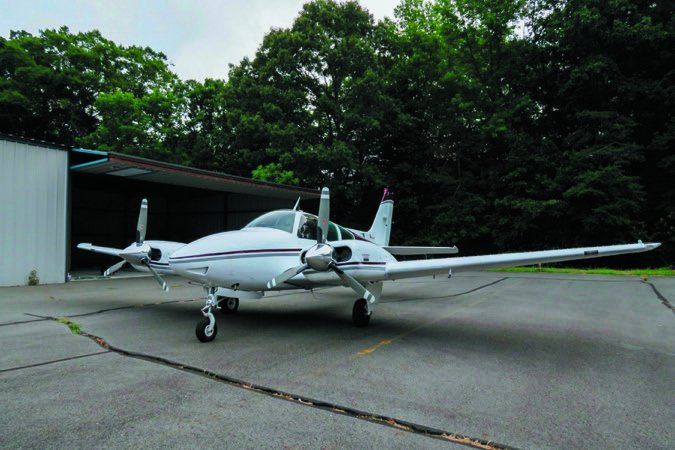All the way down to the basic Musketeer, Beech just took pains to get its airplanes’ flying manners a cut above everything else, and that applies in spades to the Baron series. Fly most any Beechcraft model and you will likely come away impressed with its sturdy feel, solid build and, especially, its satisfying handling. Even so, every aircraft company has to make compromises. In the 55 Baron, for instance, what many find to be pleasant handling characteristics can prove to be a handful in poor weather, or when the air turns green with turbulence. We shouldn’t have to reiterate that nothing comes for free, particularly in a higher-end Beech.
Maintenance shops will smile when you roll up in a Baron so, yes, this airplane is far from cheap to own or operate. The bright side is a perennially soft market for piston twins means a Baron may not be ruinously expensive to acquire, although since we looked at the market last, used market prices are clearly on the rise. There are still some used-market bargains for Model 55s-also known as the “baby Baron.” Older Baron models are often priced lower than older Bonanza models, but as we’ve witnessed firsthand, engine and vintage autopilot repairs could eat the savings in the long run.
Still, among light piston twins, the Model 55 is a solid buy, as we’ll as good investment for those who already own one if you can accept the costs to play. It seems Baron prices have declined just slightly less than other light twins. But even in the current improving market, there’s enough softness left for the canny buyer to negotiate a deal on most twins, including a Baron.
Model History
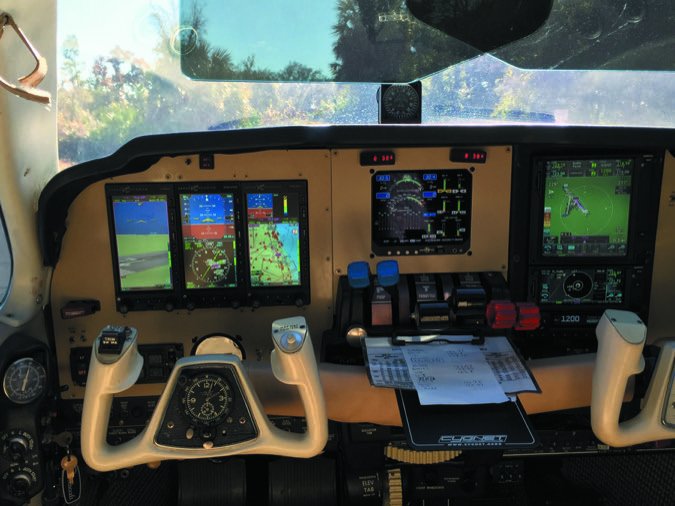
Although Beech (now Textron) isn’t quite the master of the parts-bin model evolution that Piper is, the Baron has nonetheless been through some changes.
Like the Bonanza, it came in two sizes, long- and short-cabin (Models 58 and 55). There are several sub-types: The 58 could be had for a time with turbocharged engines and, if desired, pressurization. There aren’t many P-Barons flying around and today, only the long-body 58 remains in production. Plan on an eye-popping invoice we’ll north of $1.3 million, complete with a Garmin G1000 glass cockpit and no shortage of luxurious appointments in its cabin. But there are more palatable options if you haven’t budgeted that kind of dough for a Beechcraft twin.
The Model 55 was Beech’s first Baron. It came out in 1961 as a replacement for the Model 95 Travel Air, which was a bit long in the tooth, to meet competition from Cessna’s 310 and Piper’s Aztec.
Like the Travel Air, the 55 comprised a Bonanza fuselage fitted with a conventional tail, not the V-tail. In place of the Travel Air’s somewhat anemic 180-HP Lycomings, the original Baron had 260-HP Continental IO-470L engines.
After building 190 Barons that first year, Beech came out with the A55, which has a 10-inch-longer fuselage and could be ordered with a second fold-down rear seat, bringing potential seating capacity to six (more on that later). A total of 309 A55s were built in 1962 and 1963. The airplane’s nose was then extended seven inches for more baggage and avionics equipment, and gross weight was bumped from 4880 to 5000 pounds. The airplane was redesignated B55.
This version remained in production the longest, until 1983, when all 55s were dropped from the line, along with the 58TC and V-tail Bonanza. Browsing the for-sale ads, expect to see more B55s than any other model because there are simply more of them. Beech built 1954 of the “long nose” B55s from 1964 through 1982, not including about 70 T-42A versions for the U.S. Army. Among a number of minor refinements during this time was an increase in gross weight to 5100 pounds, starting with S/N TC-955 in mid-1965. Earlier B55s were eligible for the higher gross through a Beech STC kit. The big-engine version arrived two years after the B55. The C55 Baron appeared in 1966 with a 12-inch-longer fuselage and 285-HP Continental IO-520C engines. The “little Baron with the big engines” also was certified with a gross weight of 5300 pounds. The airplane was redesignated the D55 in 1968 and the E55 in 1970. It, too, was dropped from production in 1983, after 1201 were built: 451 Cs, 316 Ds and 434 Es.
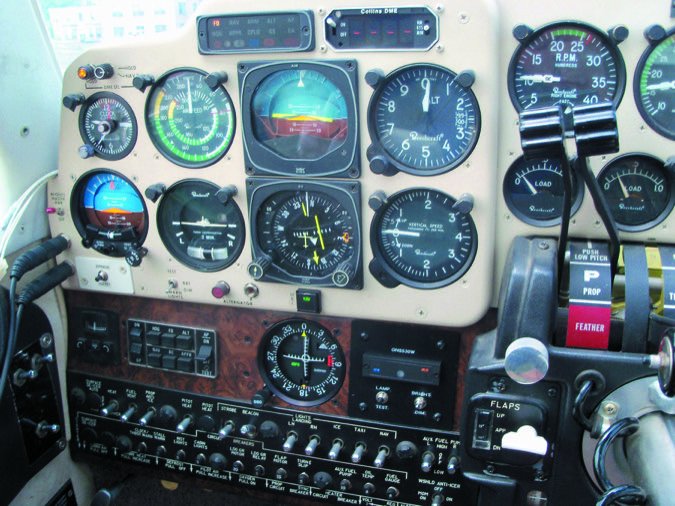
Big-engine 55 Barons are easily identified by the air scoops atop the cowlings. The difference in length is less obvious, but it shows up when it comes time to load the airplane: The nose baggage compartment is larger, as is the cabin. Other differences included the level of standard equipment and the availability of a 166-gallon fuel system on the big-engine version.
Ergonomics
Designing an airplane is one compromise after another. You have to put switches and controls somewhere and Beech decided to put the flap switch on the left and the gear on the right. There’s nothing at all wrong with that arrangement. But as it happened, everybody else in the industry decided to do just the opposite. The result was (and is) predictable: A new Baron pilot reaches for the flap switch on rollout and retracts the gear instead.
The record shows a long string of gear goofs over the years and although some insist that the switch location has nothing to do with this, other models don’t seem to suffer the same kind of incidents. The picture is further confused by the fact that in response to customer pressure and its long history of gear retraction accidents, Beech changed the controls around in later years so they matched the rest of the industry. (This only showed up in later versions of the 58 Baron. The 55 was out of production by the time the change was made.) The “backward” switches aren’t really a bad design, it’s just that a pilot has to remain aware of them. Many Baron pilots make a particular point of touching nothing until they’re clear of the runway and stopped, so that they can devote their full attention to the controls. And it’s not just the gear and flap switches.
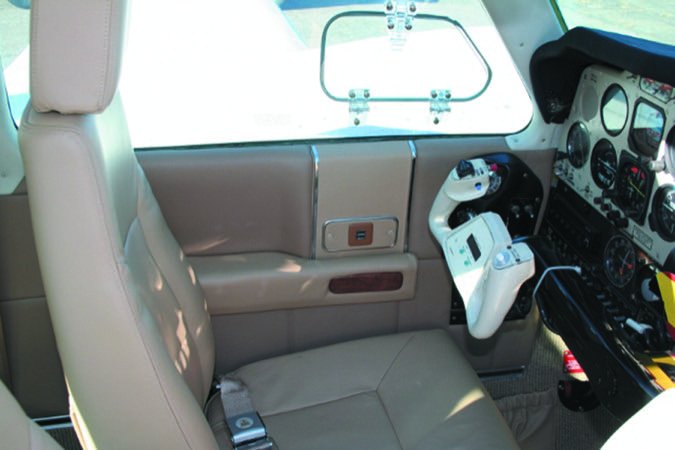
Beech’s throttle quadrant is different, too. Instead of the more usual throttle-prop-mixture, Beech put the throttles in the middle. But the power levers are taller, so they don’t demand the kind of care you need with the gear switch. While there have been some fuel mismanagement accidents, the Baron’s system is simpler than some others. Early models can draw fuel into the engines from the main tanks-37 usable gallons, each side-or the auxiliaries, each with 31 gallons. The fuel system was simplified in 1974 with interconnected tanks and three-position (on, off, crossfeed) selectors. Also that year, extra aux tanks became available for the E55 model, boosting max fuel capacity to 166 gallons.
Cabin, Loading
Beech cabins are notably plush and comfortable, and the 55s-even the early ones-are par for the luxury course. The tapered fuselage, however, can cramp normal-sized adults banished to the rear seats, although it does provide a couple of big windows to ease their exile. Since the rear seats can be gained only by clambering over the middle seats or through the baggage hatch, they’re of little use. Many pilots get rid of them, using the space for baggage.
The front seat of a 55 Baron has to qualify as one of the world’s greatest places to be, with comfort enhanced by a retractable center armrest, adjustable rudder pedals, lots of headroom and good visibility over the nose and out the side windows. Beech was less successful at the finer points of panel design. The massive tube-like structure carrying the yokes obscures instruments on the lower portion of the panel and hides circuit breakers and switches. Also, the seats have limited forward and aft travel.
As twins go, the 55 Baron has decent if not exceptional payload. A typically equipped 260-HP Baron can carry about 1800 pounds of people, bags and fuel; a 285-HP model, about 1950 pounds. There is no zero-fuel-weight restriction, but care is needed to avoid busting the aft CG when the rear seats or aft baggage compartment is used, a typical Beech weak spot. Balancing the load is facilitated by a nose compartment that can hold up to 300 pounds (270 pounds in early models with gross weights below 5100 pounds). With the fifth and sixth seats removed, 400 pounds can be loaded into this space. Many Barons also have an extended aft baggage compartment approved for up to 120 pounds.
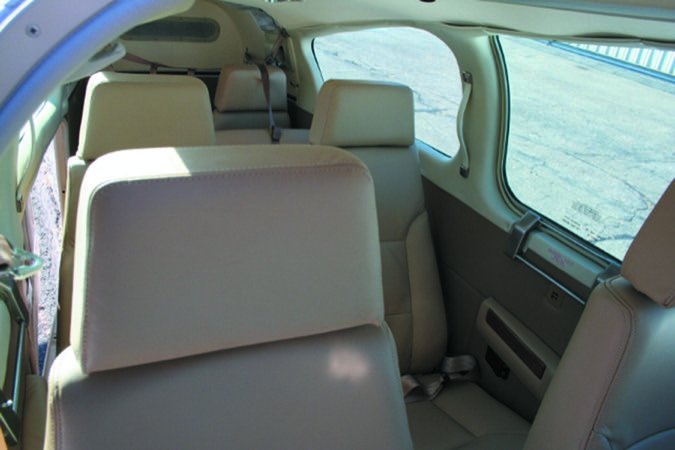
True airspeed of a small-engined Baron cruising at 75 percent power is about 190 knots on 27 gallons of fuel per hour. That’s faster than the naturally aspirated Aztec and Cessna 310, but a good bit off the Aerostar’s pace.
The big-engined Baron is about 5 knots faster and 5 GPH thirstier than its stablemate. Takeoff and landing performance is average. A B55, for instance, can take off or land over a 50-foot obstacle within 2160 feet. The E55 needs only about 2050 feet to clear the obstacle on takeoff but a bit more than 2200 feet to get back over it on landing. Short-field technique can cut these figures roughly in half, but it’s hairy, involving liftoff below Vmc, for example.
Two-engine climb rates of 1630 to 1700 FPM for the small-engined Barons, and 1670 to 1680 FPM for the more powerful models, outpace the Aztec by a wide margin but lag behind the Aerostar and 310. The B55’s single-engine climb rate is a paltry 318 FPM-again, better only than the Aztec.
At 388 FPM, the E55’s single-engine performance is about par with the 310 and Aerostar. None of these are exceptional single-engine performers, so the wise pilot will keep them as light as possible.
Range, of course, depends on fuel and that varies a bit in the 55 Barons. Depending on year and model, standard tankage was 100 to 112 gallons but optional tanks of 142 or 166 gallons were also available. The 56TC Baron could be fitted with as much as a whopping 204 gallons of gas. With 112 gallons aboard, the 55 has acceptable but not exceptional endurance and range.
Figure on 26 gallons an hour at 185 knots in the mid altitudes and three- and four-hour legs are easily doable. Without larger tanks, four-plus hours chews into the reserves. The Baron is not a 1000-mile airplane, but it’ll knock off 600 miles without breaking a sweat.
The 55 Baron is proof that a light twin doesn’t have to handle like a truck. Responsive and well-harmonized, the airplane’s controls are one of its biggest selling points. As one owner put it, “Once you’ve flown an E55, everything else feels like a tin can.” As mentioned earlier, however, hand-flying may be delightful in nice weather, but when it gets bumpy, an autopilot comes in handy. There are trim controls for elevator, rudder and ailerons. Early models have relatively low gear- and flap-extension speeds (143 and 113 knots, respectively). Gear speed was raised to 152 knots, beginning with airplanes built in 1969. The B55 came with approval to lower flaps 15 degrees at 153 knots, and full-flap speed was raised to 122 knots, beginning with TC-955 in 1965.
Maintenance, Mods
Owners of all Beech models consistently complain about one thing: The high cost of Beech parts, especially control surfaces in need of replacement due to hangar rash or corrosion. Fortunately, the 55s aren’t considered maintenance hogs and owners say replacement parts aren’t needed often.
Much maintenance relates to the engines. The O-470s are among the most robust and reliable engines in the Continental line and although the O-520s are nearly as good, they might suffer premature cylinder wear. Some owners complained of low compression on Continental cylinders after 500 or fewer hours.
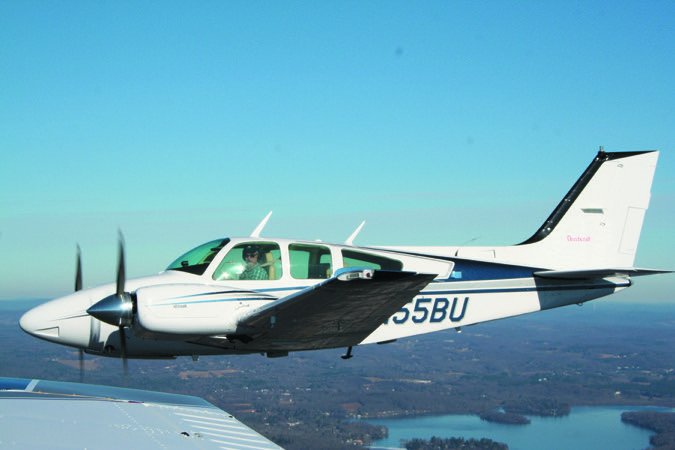
Owners say annuals range from $2000 (we don’t think that happens often) to as much as $6000 (realistic), but we think the wise owner will budget at least $10,000 a year to cover both the annual and ongoing maintenance. As an hourly maintenance cost, one owner told us a good guideline is to double the fuel cost. With avgas running about $4.50 a gallon, that works out to about $230 per flight hour. Fly 150 hours a year and you’ll spend about $35,000 to include engine reserves.
The IO-470L is considered a bulletproof engine, although a few owners, as we’ll as several Service Difficulty Reports, mentioned occasional cylinder problems. The IO-520’s reputation is not so good; operators have been beset by cracking crankcases. Continental’s switch to so-called “heavy” cases in the late 1970s helped somewhat, but case cracks and broken camshafts have appeared frequently in the SDRs.
Among the notable Airworthiness Directives are: 87-18-06 Rev. 1, requiring replacement of recline actuator handles on copilot and center passenger seats to prevent inadvertent unlocking; 84-26-02, replacement of paper air filters; and 84-09-01, requiring various inspections and modifications to ensure that the emergency window will open. Prospective buyers should also ensure that 91-15-20 (repair or reinforce cracked engine mounts) has been complied with.
There are three ADs on the props: 97-18-2 (repetitive inspection, A55 and B55 Hartzell props); 95-24-5, (repetitive inspection, E55 McCauley props); and 91-15-4, on the A55. AD 89-5-2 deals with cracking elevator components, with possible replacement of the elevator. Owners of Beech 55, 56TC, 58 and 95 Barons should look for cracks in the wing forward spar carry-through. The cracking, according to Airworthiness Directive 90-8-14, could lead to “loss of the airplane.” Beech first apprised owners through a mandatory service bulletin. The bulletin-No. 2269-was originally issued in August of 1989. In March 1990, Beech revised the bulletin that increased allowable crack lengths as described in the service bulletin will not compromise the integrity of the forward spar carry-through structure.”
The AD specifies that the carry-through must be inspected at 1500 hours total airframe time and repeated every 500 hours if no cracks are found. To get at the carry-through, the mechanic must remove the front seats and the carry-through cover on the floor. From there, it’s a standard crack inspection. The carry-through and webs are cleaned, then checked using visible dye-penetrant. If no cracks are visible, he can button it up and come back in 500 hours.
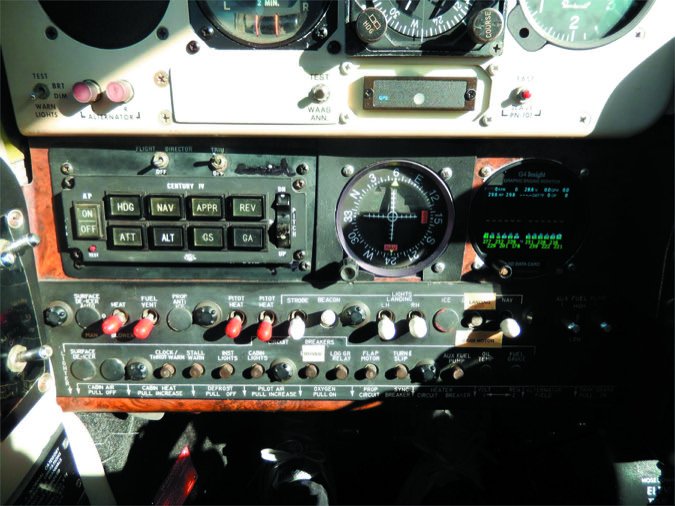
If cracks are visible, it’s time to get out the rulers. The cracks must be measured and, depending on where they are and how long they are, repaired. Beech sells a kit to do any required repair work. The other area of concern is the spar web face, in the area of the huck fasteners. Here, cracks are limited to one inch length. Only one crack is allowed per side, and Beech specifies that it can’t be stop drilled. Instead, the mechanic must look at it again in 200 hours to see if the crack has grown. If it has grown, or if it was more than an inch long to begin with, another Beech kit is needed for the proper repair. The repair must be made within the next 25 hours, or immediately if it is between two fasteners and extends more than a half inch beyond the fasteners.
Beech figures one tech should be able to complete the inspection in four hours, provided the airplane is already apart for an annual or similar inspection. Like EPA mileage estimates, your labor charge may vary. If cracks are found, there’s the added cost of stop drilling, plus the price of the kits if the cracks need repair. The kits cost several hundred dollars each. Installation time depends on the shop’s sheet metal proficiency. The average shop should be able to install one kit in about 55 to 60 hours.
Many mods are (or once were) available for the Baron, including the usual engine upgrades from Beryl D’Shannon and the defunct Colemill, which was taken over by Tennessee-based Mike Jones Aircraft (www.mikejonesaircraft.com).
The STC’d Colemill President II conversion replaces the existing engines with 300-HP Continental IO-550E engines and new Hartzell three-blade propellers. The mod also comes with new accessories, including starters, alternators, magnetos, engine mounts, hoses and vacuum pumps.
Performance wise, these engines can be run all day at full power and lean of peak EGT. The advertised climb performance at sea level is 1900 FPM (owners tell us they see often see better), while cruise is 200 knots. But the real impressive performance boost is during an engine-out situation, where a Colemill Baron 55 can climb at 560 FPM and the service ceiling is raised to 14,400 feet. Saul Bresalier, who converted his B55 in the 1990s, verified these claims and made some good points for real-world performance perks.
“I think the bigger engines make it a much safer twin. It eats much less runway during takeoff, and lightly loaded I’ve seen turbine-category climb performance without using much more gas than I did with old IO-470 engines,” he told us.
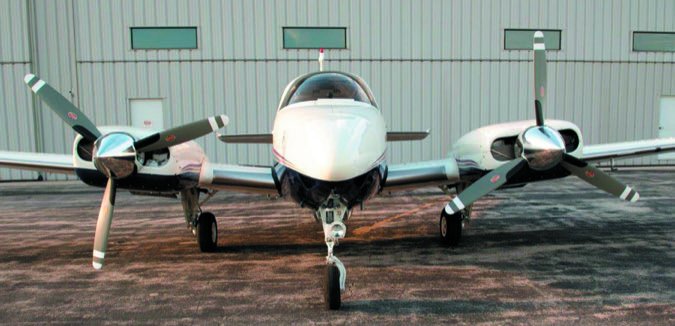
Bresalier said it took him nearly 100 hours before he really felt comfortable having the extra power, plus his insurance company required additional training. He transitioned to his Baron after significant flight time in a Piper Saratoga.
The current price list for the President II mod with factory remanufactured engines is $157,900. For an additional $11,000, you can have factory new engines. Mike Jones Aircraft also offers STC-approved winglets for $19,900, or $34,900 in combination with long-range fuel tanks. These prices include installation.
The current Aircraft Bluebook put the average retail value of a 1975 B55 at $98,000, but we spotted a couple of Colemill-converted models of the same year (with modern avionics) priced close to $200,000 even with higher times on the engines.
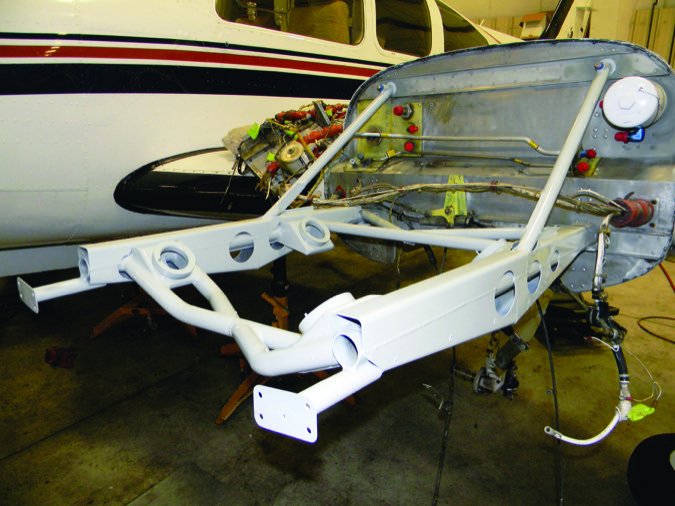
General Aviation Modifications makes GAMIjectors for the Baron line. One mod in particular deserves mention, since it gives such a dramatic improvement in performance: vortex generators. VGs are available from a couple of different manufacturers. We tested VGs in this issue of Aviation Consumer. Bottom line: On the Baron, they work as advertised. Kits are available from Beryl D’Shannon and Micro AeroDynamics of Anacortes, Washington.
Baron owners don’t have an association of their own, but the Wichita-based American Bonanza Society we’ll supports the Baron along with the Bonanza. The ABS publishes an informative newsletter and conducts service and proficiency clinics at about a dozen locations each year. We highly recommend the organization.
Contact them at American Bonanza Society, 3595 N. Webb Road, Suite 200, Wichita, Kansas 67277, phone 316-945-1700 or www.bonanza.org.
Baron Mishaps: Fuel, Landing Gear
The baby Baron has a reputation as one of general aviation’s best personal hot rods with excellent performance but with demands that its pilot know what’s what. After reviewing the 100 most recent 55-series accidents, we think the reputation is accurate. Based on what we saw we strongly recommend that Baron pilots take recurrent training-annually, at least-to be able to get maximum performance out of this good airplane and to keep from wrecking one, as the marque is not particularly tolerant of mishandling.
We were surprised to see 15 landing gear accidents; that’s high for any retract. Only two involved a mechanical problem. Ten pilots simply forgot to put the gear down, while three lowered their airplanes abruptly when the Firestones were on the runway. With the variation in gear and flap switches on Barons, we recommend not touching either one while the airplane is rolling.
One pilot did not get a nose gear down indication and elected to make a low pass by the local FBO to get an opinion from those on the ground. At the end of the low pass he pitched up, rolled sharply and crashed.
Seeing 15 fuel-related accidents was troubling-we think that’s high. The tip-tank Cessna twins have a fuel system that is considered by many to be complex and challenging to operate in comparison to the Baron’s, yet in our experience, those average eight accidents per 100. While the majority of the accidents were due to fuel exhaustion (or not selecting a tank with fuel in it), nearly half involved pilots who either positioned the fuel selectors between tanks or tried to take off or maneuver with the aux tanks selected.
0)]
In the “other” category, there were three wing explosions on engine start due to fuel leaks, something we don’t recall seeing on other airplane types.
We give kudos to the pilot who found himself diverting due to weather and made the decision to make a precautionary landing when fuel got low. The airplane was damaged but no one was hurt.
There were eight accidents that occurred after the pilot stalled the airplane-almost all developed into spins from which the pilot did not recover.
One pilot was observed to taxi out rapidly and launch without a run up. The airplane pitched up sharply on rotation, stalled and crashed. Investigators found that the pilot had installed a home-grown control lock and not removed it. It didn’t help that the airplane was loaded over gross and aft of the rear CG limit.
There were only seven engine stoppages due to maintenance issues. Beech aircraft have never had a reputation for being inexpensive to operate, so it appears that most Baron owners have been willing to shell out the bucks to keep their airplanes in shape.
An open cabin door is not a major problem on a Baron, but we think it is reason to abort a takeoff. One pilot continued, climbed to safe maneuvering altitude and intended to pull the power back to start his landing approach. Used to flying different model twins, he confused the power levers and feathered both props. With no accumulators, he was unable to effect a restart in the altitude available.
Owner Feedback
I’m a co-owner of a 1968 D55 that’s been in my family since 1971. The C55, D55 and early E55s are light in weight and heavy on power with their 285-HP Continental IO-520s. In general, these airplanes can get out of any field they can get into. And the landing gear is stout enough to handle flying in and out of our farm’s grass airstrip for 47 years with minimal required maintenance. These days, many of these airplanes can be had for less than $100,000. You can’t get much better bang for the buck than a fun-to-fly, 190-knot, six-seat twin that can comfortably use 3000-foot strips of any surface (at sea level).
Load-carrying ability is a major benefit of these airplanes. Don’t be surprised to see 2000-pound useful loads in early models. It is one of the few fill-the-seats-and-tanks airplanes flying. As the E55s continued in production toward the end in 1982, they were progressively optioned with more stuff and useful load suffered somewhat. CG, however, must be minded and can be maintained by filling the generous nose baggage compartment with luggage or ballast. Early models (prior to 1972 or so) use large, extended-chord flaps (also found on the Beech Duke) to provide a lot of extra lift and lower stall speeds to 67 knots (dirty, power off). If power is kept on, the wing will fly to amazingly slow speeds. The early C/D/E55s have the load-carrying ability of a Piper Aztec with the luxury of 20 knots more speed. They also have amazing short/soft-field takeoff abilities that were later abolished when Beechcraft removed the POH data that utilized flaps for takeoff. Prior to then, the published takeoff ground roll at max takeoff weight was 596 feet! The 50-foot obstacle distance is a similarly astonishing 968 feet. To achieve this feat, the airplane has to be off the runway and flying we’ll below Vmc-it doesn’t take much imagination to figure out what happens if an engine fails in that situation. Without flaps these numbers are basically doubled. In a pinch, of course, the performance is still there.
There are many less-obvious differences in the 520-powered Barons compared to the 470-powered 95-55 through B55 models. The C/D/E55s are more akin to a 58 than a B55. The long nose is shared with the 58 and holds substantially more cargo than a B55. The maximum structural cruising speed (top of the green arc) of the C/D/E55 models is the same as the Model 58, allowing for more buffer against the yellow arc in turbulent air. The tail span is the same as a 58 and is substantially larger than the B55, so plan carefully when looking at T-hangars.
The engine mounts are the dynafocal type rather than cradle type used by the IO-470-powered Barons. One caution: Many owners and mechanics think all Model 55s are the same, which can cause lots of problems when ordering replacement parts. Check airframe serial number compatibility carefully.
One downfall of the C/D/early E55s is fuel capacity, which is 136 gallons usable. Model year 1975 and later E55s had optional 166-gallon tanks. We long for an affordable STC to graft the wet wingtip of later Model 58s onto our airplane. In addition, fuel management of the older airplanes with four separate tanks is a potential trap. It’s possible to burn out of one set of tanks while the gauges are actually measuring the other set.
We upgraded the motors to the 300-HP IO-550s in 2004 using the Beryl D’Shannon STC and have further boosted our D55’s performance and economy. If you want to go 200 KTAS it’ll cost you 32 GPH. We typically run it LOP getting about 190 KTAS on 28 GPH on longer trips, just like the old 520s did. For short trips, we often run it about 170 KTAS on 18 GPH total, set LOP. Barons like to be flown high and all of this data is for altitudes from 8000 to 10,000 feet.
With the 550s, you can have your cake and eat it too with a 200-knot six-seater that can be run almost as efficiently as a Piper Twin Comanche.
Peter Bedell
Gaithersburg, Maryland
We purchased our 1978 Baron 55 for $110,000 and now base it at Waterbury Oxford Airport in Connecticut. My partner and I both wanted to move up to a twin. I definitely recommend a good partner as the way to purchase a twin because this can make ownership somewhat affordable. My co-owner is a retired corporate and Air Force Reserves pilot, while I own a Beech V35S Bonanza.
There are reasons decent 55-series Barons sell in the very low $100,000s. Although the time on our engines was low (800 since a major overhaul and 170 since prop overhaul) the plane had just not been flown enough. Year-to-year maintenance had been kept up and we had few problems with the pre-buy. We took it to Reese Aviation in New York for paint, which was a $26,000 investment. Then Executive Aircraft Interiors at Waterbury Oxford redid the interior for $21,000. An avionics retrofit by VIP Avionics in Hartford, Connecticut, included a new Avidyne IFD 540 navigator, an Avidyne ADS-B transponder and Avidyne MLB-100 weather system, We also had a JPI EDM760 twin-engine monitor installed. The total cost of the avionics retrofit was about $30,000. This included a used electric 3-inch standby attitude indicator and some repair work on the S-TEC 55X autopilot.
The first annual inspection at Master Aviation in Danbury, Connecticut, was an eye opener at $47,000. We had to address broken exhaust stacks, replace the brakes, replace two cylinders, fix the electric propeller anti-ice system, repair the fuel gauges, replace the engine mounts and had both props overhauled for $17,000.
One of us flies the Baron mostly around New England in two-hour hops, while the other routinely flies it to Texas and Florida. We save $100 per hour for engine overhauls and we each leave the tanks full for the next guy. Three oil changes per year adds about $7 to the operating costs. Fuel burn is in the 22- to 23-GPH range when operating LOP. After all that, our total operating cost is about $217 per hour.
In reality we should be, at this point, charging ourselves more like $150 per hour for engine overhauls, but we figure we’ll face the difference when that day comes.
For fixed costs, there’s the $750 per-year tax for the privilege to keep the airplane in Connecticut, $1100 per year for electronic charts, $2200 per year for insurance, $6600 per year for the hangar, plus we expect this year’s annual inspection to be around $12,000, even after getting caught up on maintenance issues.
I think these are beautiful airplanes to fly, as light on the aileron control as a Bonanza or even some jets. Elevator control is heavier than single-engine airplanes, but the plane trims well.
We highly recommend a two-owner (perhaps three) partnership, especially when you can have as much fun at it as we do.
Ross Detwiler
via email

